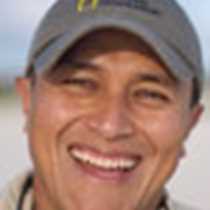The largest human population of the Galapagos Islands is located on Santa Cruz Island, specifically on the town of Puerto Ayora, which we visited today. Our day started with a visit to the Charles Darwin Research Station and the Galapagos National Park headquarters. Here, we learnt about the important efforts that scientists and rangers are doing to protect the unique ecosystems of the Galapagos. We were lucky to visit the recently opened “Tortoise Route” exhibition, where one can see the emblematic giant tortoises at different stages: from the little baby tortoises which just hatched this year to the giant adult specimens that where collected on different islands of the archipelago. We also visited the exhibition room where the Lonesome George, an animal that embodies the extinction of species as result of human interference. There is a strong message behind this exhibition, and it takes us to reflect on the relationship between people and biodiversity. After visiting Lonesome George, we visited Diego, the male tortoise from Española Island that has helped bringing the population of Española tortoises from 14 in the 1970s to a current population of more than 2000 individuals. This success story gave us a broader perspective of the challenges and progresses made along the history of the oldest national park of Ecuador.
After visiting the Research Station, some groups visited a local farm where they had the opportunity to enjoy organic coffee and sugar cane products. With one of our groups, we also visited a local school where we had a nice time experiencing the way that kid learn in such a unique scenario as the Galapagos.
Later on, we moved to Rancho Manzanillo, where we had lunch. Once we enjoyed a fabulous lunch, we went on to explore this ranch looking for the Santa Cruz variety of giant tortoises. We saw various tortoises of different sized, foraging on the grasses and plants existing on this area. At this point, we all distinguish the different kind of morphotypes and behaviors of the dome shells and settle back tortoises, and now we are all wondered by the fascinating reptile world we have seen during this week.
Finally, we came back onboard the National Geographic Islander to be delighted by a great cultural experience with local musicians and dancers who shared their artistic talents with all of us.







